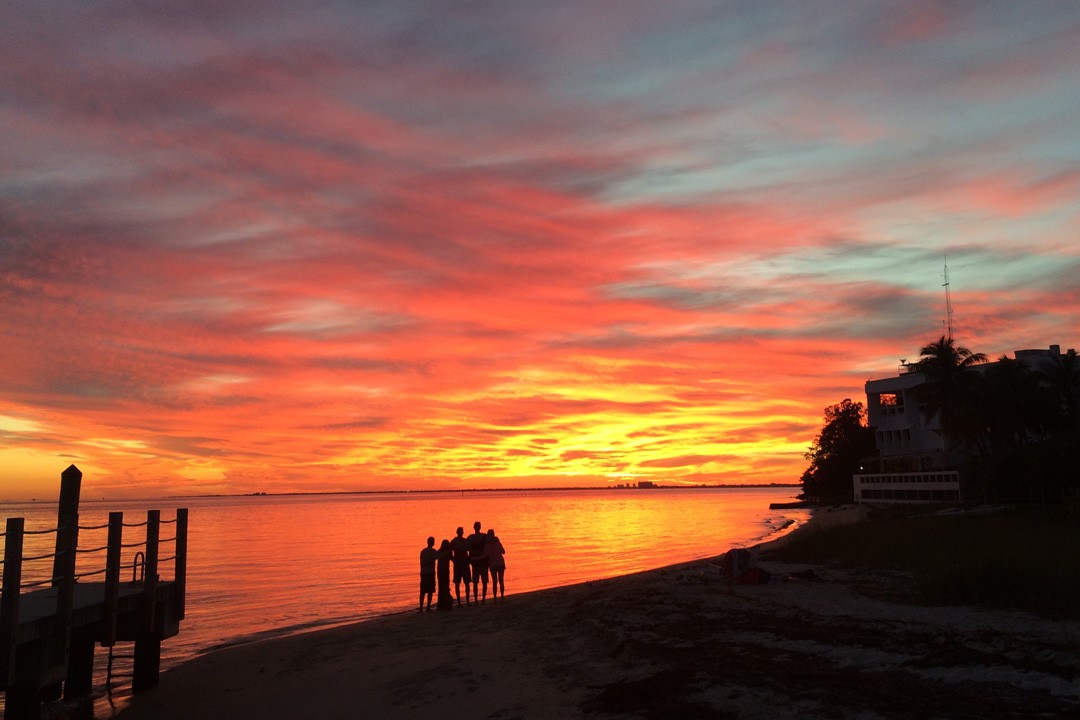NOAA has selected South Florida’s Biscayne Bay as one of the next Habitat Focus Areas under NOAA’s Habitat Blueprint. Habitat Blueprint offers opportunities for NOAA to partner with organizations to address coastal and marine habitat loss and degradation issues. It provides a framework, which builds upon existing programs, prioritizes activities, and helps users act strategically and preventively in order to sustain resilient and thriving marine and coastal ecosystems and resources.
OML is located on Virginia Key in south Florida, surrounded by the clear waters of Biscayne Bay. The bay provides a home for endangered species, seagrass nurseries, and feeding grounds for many valued fish. The bay’s clear waters also support regional economy, recreation, and tourism. In the past 20 years, scientists at AOML, Florida International University, Miami-Dade County Department of Environmental Resources Management, and South Florida Water Management District have observed a trend in increased concentrations of chlorophyll a, an index of phytoplankton abundance. Phytoplankton, also known as microalgae, are microscopic plants in the water column, requiring sunlight and nutrients to live. With increasing phytoplankton comes the potential for frequent algal blooms that damage seagrass beds by reducing the light available to seagrass.
The recorded increase in phytoplankton, coupled with the recent appearance of an expansive diatom bloom in the southern bay in 2013 and macroalgae overgrowing seagrass beds in the central bay is causing scientists to worry about the future of Biscayne Bay’s ecosystem. If phytoplankton continues to increase, the quality of Biscayne Bay’s clear, pristine water could decrease and seagrass could be be smothered causing a widespread loss that would be hard to halt or reverse.
Biscayne Bay’s mangroves provide shelter near seagrass nurseries for many
valued species. Photo Credit: NOAA
Miami residents enjoy a beautiful sunset over Biscayne Bay. Photo Credit: NOAA/AOML
An aerial view of Boca Chita Key surrounded by Biscayne Bay.
Photo Credit: National Park Service
AOML’s Chris Kelble is co-leading the implementation team with NOAA Southeast Fisheries Science Center’s Joan Browder in hopes of identifying solutions to improve Biscayne Bay health, before it declines. With the help of NOAA’s Habitat Blueprint, partnering organizations can develop assessments, experiments and analyses to ultimately protect, restore, and sustain Biscayne Bay’s healthy ecosystem.
Habitat Blueprint is providing grant opportunities for restoration projects in NOAA’s new Habitat focus areas. Up to $1.2 million is expected to be available to support comprehensive and cooperative habitat conservations projects in areas including Biscayne Bay, FL. Habitat Blueprints goal is to have projects that sustain resilient and thriving marine and coastal resources, communities, and economies. Interested parties must apply and submit proposals that address the unique, site-specific objectives and issues/concerns that have been identified for Biscayne Bay, in hopes of restoring degraded areas, protecting environmental habitats, and fostering resilient coastal communities.
Originally Published in January 2015 by Shannon Jones
